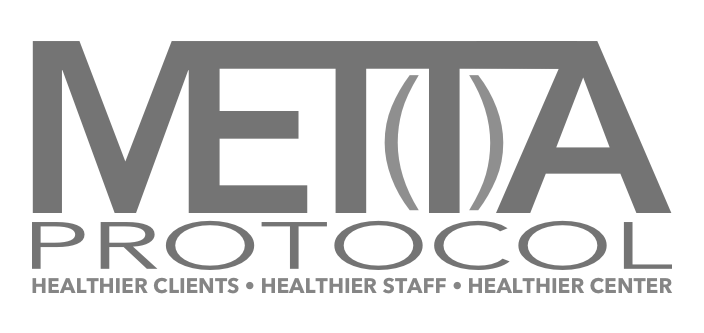HISTORY
The history behind MET(T)A in essence begins almost 2600 years ago with the teachings of Siddhartha Gautama who came to be known as the Buddha, or Awakened One. His system of psychology as outlined in the 4 Noble Truths and the 8 Fold Path has brought the lessening or the end of suffering for millions over the millennia.
When East and West met more directly during the last century on the levels of spirituality and psychology, mindfulness practice was incorporated into many Western psychology practices, and this trend continues today. MET(T)A seeks to turn its sights toward many of the original teachings of the Buddha as its guidepost for how to continue this work of utilizing Buddhist psychology in healing settings. The work of more modern Dharma teachers and those who have proposed and implemented secular mindfulness interventions and psychologies have not been set aside, but rather placed within the full context of mindfulness practice over the centuries.
There are other elements to the story, but the next big event was the discovery and description of Eye Movement Desensitization Reprocessing (EMDR) by Dr. Francine Shapiro in 1987. Since her initial practice and research, EMDR therapy has become an evidence based treatment for Post Traumatic Stress Disorder. It is touted by the World Health Organization and other bodies as a front line treatment for trauma. Bessel van der Kolk and others who are trauma treatment pioneers but not EMDR therapists themselves have also seen EMDR therapy as an outstanding development in psychology.
Another step toward MET(T)A was due to another pioneer in the EMDR therapy world, Dr. Jamie Marich. While I was working hard in addiction treatment environments, Jamie was developing trauma-informed programming and writing two books, EMDR Made Simple and Trauma Made Simple, and then developing the Institute for Creative Mindfulness EMDRIA Approved Curriculum for EMDR Therapy Training. She developed advanced courses linking mindfulness in all its manifestations to the 8 phase protocol. In 2015, Jamie asked me to join her as Senior Faculty of her Institute, and we went on to write a book together, EMDR Therapy and Mindfulness for Trauma-Focused Care.
At this time, I was in the midst of helping to set up the first major Buddhist addictions rehab, and the full idea for MET(T)A was born. I began to see the potential benefits of using the protocols of EMDR therapy, along with mindfulness practices, as the central organizing principles and practices for the center. I worked to understand the influence trauma had on all of our clients and saw the role of trauma in a whole host of difficulties. Relying on the highly researched success of the EMDR therapy protocol as well as evidenced-based mindfulness treatment techniques, I began to implement the MET(T)A Protocol, training all clinical staff in EMDR therapy and providing EMDR therapy and mindfulness work for all clients. Shapiro herself has always both explicitly and implicitly noted that EMDR therapy was a complete approach that could provide healing for below-the-threshold-of-PTSD symptoms and difficulties, and now has become quite clear about this in her renaming EMDR as EMDR therapy. The time has come for EMDR therapy to be utilized (and researched) to its fullest.
Buddhist mindfulness and EMDR therapy have been my two main modes of healing and helping in my career as an educator and a therapist. I have worked in several addictions treatment settings that believed in the importance of trauma-informed care, but there never seemed to be a structure that could actually do something specific, long-term and sustainable about the underlying trauma of addictions clients. The MET(T)A Protocol was born out of the belief that mindfulness can be a core organizing principle and resourcing tool in a treatment setting. When paired with the 8 Phase Protocol of EMDR therapy and the Adaptive Information Processing (AIP) Model that explains it as the systemic structure and guide for clinical treatment, we could move from “trauma-informed” care to “trauma-focused” care. Traumatologists and those in the psychology and mindfulness fields in general are calling for treatment of trauma as a key to successful healing. Those in the addiction treatment field are saying the same. So, let’s use those theories and practices that will bring that desired result -- mindful trauma resolution resulting in stronger relapse prevention skills and sustainable long-term recovery.
MET(T)A is called by this name because there is the "meta" use of the 8 phase protocol, the 3-prong protocol and the AIP Model of EMDR therapy as a template for the work of an agency. The agency views its work through this prism, thus allowing for the possibility of trauma resolution through EMDR therapy for clients. It is also a prism that is filled with and guided by lovingkindness, or "metta", born of the Buddhist mindfulness that infuses the treatment as well. Mindfulness and EMDR Treatment Template for Addictions -- MET(T)A.
The next phase of the MET(T)A story is that now the “A” will be changed simply to Agencies and/or “All” as it is essentially a treatment for most if not all difficulties in all types of settings. It is also a community based model, where private practice therapists can train so that they might better support clients who come out of MET(T)A Protocol agencies.
For now, MET(T)A guides the treatment at two centers in Los Angeles. Several other treatment centers and individual providers are starting to request aspects of the protocol or the full protocol to be adopted. So this is the history so far... more will be revealed.
